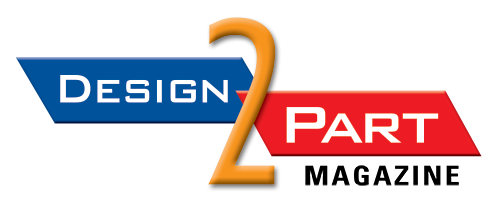By Mark Shortt
We’ve all seen or heard certain contract manufacturers being described as “dynamic.” The term is clearly a compliment, begging the question, “What makes them dynamic?”
In the world of American manufacturing, dynamic contract manufacturers are adept at meeting customers where they are—satisfying their most urgent needs and requirements as they change and evolve. Many are quick to recognize and capitalize on business opportunities, partly because they readily adapt to emerging technologies and market needs.
There’s no single formula that fits all. But one of the ways contract manufacturers exude dynamism is by proactively getting out in front of industry challenges and creating new ways to add value for customers—and, in many cases, the broader markets that they support.
Many have a keen understanding of the industries they serve. These suppliers appreciate the potential, as well as the limitations, of available technologies, with an eye toward those that are emerging. They have a grasp of where technology developments are heading in various sectors of manufacturing, not just their own.
For example, what factors are impacting markets for existing parts, or planting seeds for the creation of new, more innovative processes and products? Their answers will help determine where they focus their resources—the technologies they adopt, the personnel they hire, and the industries they serve.
The ability to recognize a window of opportunity emerging from these developments and—even more important—the will to quickly pursue it are key. A contract manufacturer might seize the baton by adding production capacity, mastering advanced technologies, or providing new services that enable the company to reach and engage new customers or tap into emerging markets.
Why are dynamic contract manufacturers important? Because you need to find the best manufacturing processes, service providers, and suppliers to help your engineering teams solve tough production challenges and deliver innovative products to market. Solving a tough production challenge often requires the ability to quickly pivot from the problem and draw upon knowledge and skills in a separate area that may or may not be related.
A metal stamper, for example, may have a better chance of solving a production problem if they can draw upon their expertise in building and repairing stamping dies. (see Versatile Tool & Die Maker Boosts Production Stamping Capacity With New Servo Technology)
When it comes to multi-axis machining, a complex part design with multiple surfaces and angles also creates challenges. The operator of a CNC 9-axis machine, for instance, needs to visualize how the machining of one side of the part affects machining on another side, and plan their tooling accordingly, the vice president of manufacturing at a custom CNC machining company told Design-2-Part recently. (see Precision Multi-Axis Machining Company Combines Materials Expertise With Dedication to Craft)
Today, the United States is engaged in an international race for technological advantage that could impact the nation’s economic competitiveness, national security, and quality of life for years to come. With programs ranging from hypersonic aircraft to directed energy weapons, the defense industry has a pressing need for advanced technologies. But demand for next-generation technology also exists in industries like broadband communications, energy, medical, and aerospace, creating opportunities for smaller contract manufacturers who can quickly adapt to changes.
Contract manufacturers are leveraging numerous technologies to achieve greater production efficiencies, higher part quality and better reliability, faster delivery times, and shorter time to market. Examples include simulation software, 3D printing, automation and robotics, augmented reality (AR), and high-powered data analytics using machine learning (ML) and artificial intelligence (AI).
Research and development is vital in helping contract manufacturers improve existing processes and components, ultimately enabling the creation of better products. While many contract manufacturing firms conduct their own R&D, others form partnerships with labs or universities.
In the defense industry, equipment is needed so quickly, and technologies are developing at such a rapid pace, that OEMs and end users, including the U.S. Department of Defense, are increasingly relying on their trusted supply chains to deliver these innovative technologies into their hands. They’re seeking and partnering with dynamic parts suppliers and contract manufacturers that have the necessary expertise, agility, and quality management system (QMS) to handle their requirements.
When higher-level contract quality requirements are imposed by DoD, its contractors and parts suppliers must have a quality management system that meets an appropriate industry quality management standard, according to Department of Defense Spokesperson Jessica Maxwell. These standards include ISO 9001, ASQ/ANSI E4, ASME NQA-1, SAE AS9100, SAE AS9003, Nd ISO/TS 16949, she said in an emailed response.
“In addition to the Higher-Level Contract Quality Requirements and NADCAP accreditation, the qualities that DoD values in its contractors/parts suppliers are the ability to perform all contractual requirements, voluntary use of a QMS, even if QMS is not a requirement; and voluntary active participation in the Government-Industry Data Exchange Program (GIDEP),” Maxwell wrote in the email.
